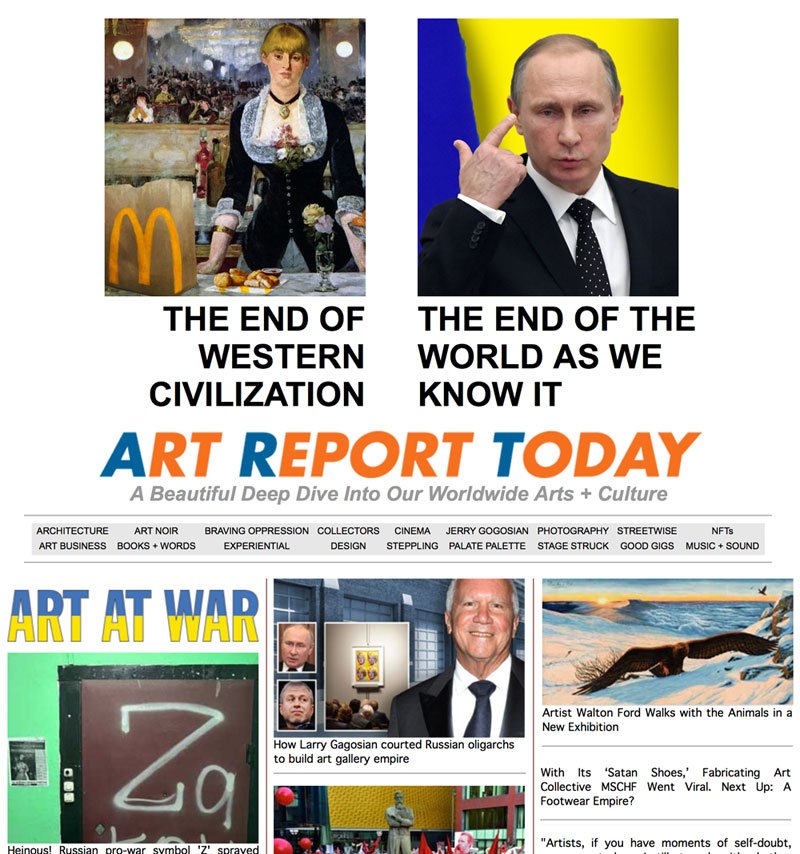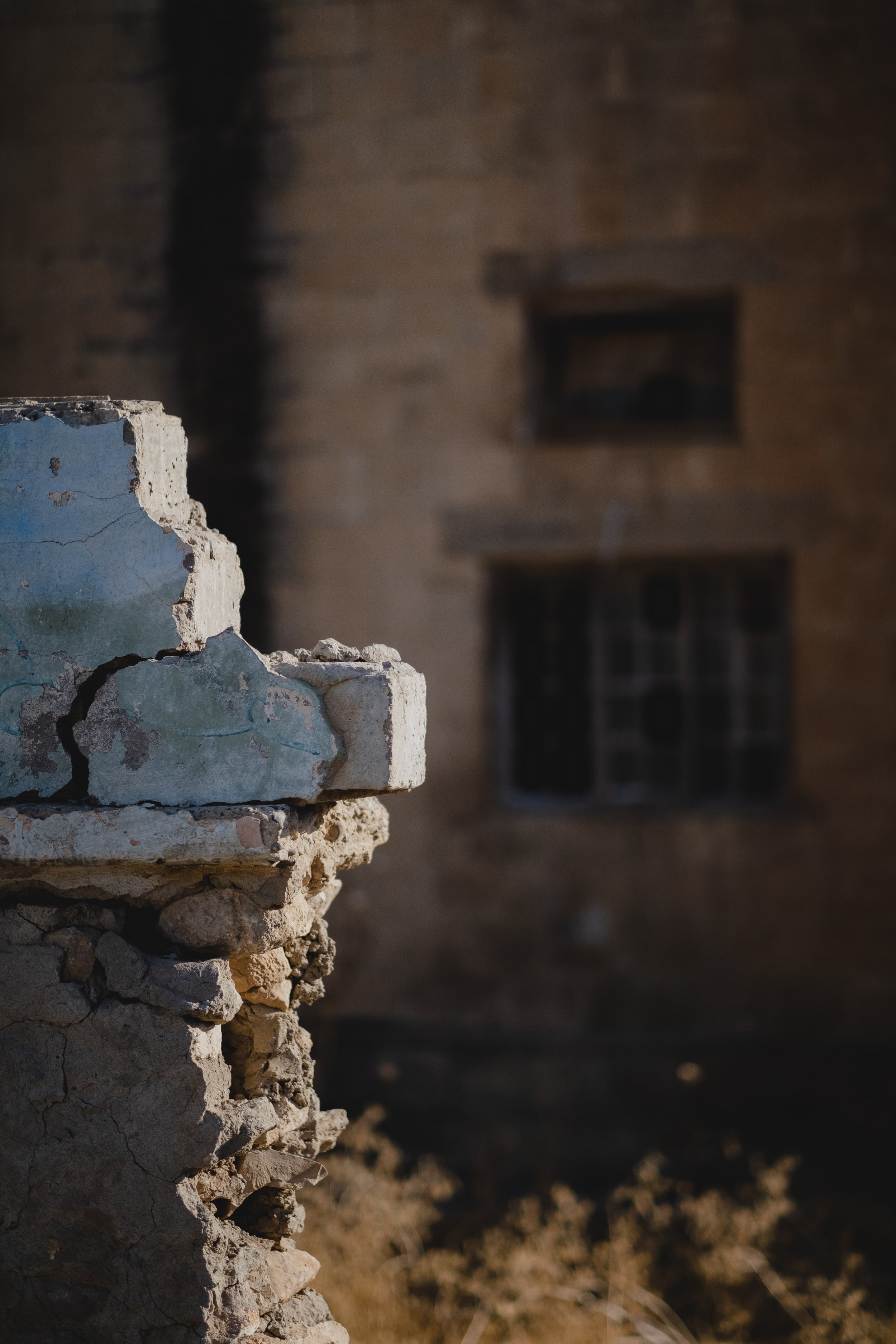Creative in Hawaiʻi

The artist’s freedom-loving habitat is a protective space, a defense against the contrary outside world, where influences should receive a wary invitation to enter. If you can maintain the illusion, that beautiful bubble will float and flourish—even in a Siberian gulag, an awful marriage or a dull suburb.
By chance or a blessing from a god, my bubble has been bouncing in the middle of the Pacific for nearly a decade.
Here is what I have learned.
Life its ownself presents an obstacle course; all we can do is keep moving and consciously growing. After a busy and rambunctious life as an artist in Los Angeles, the thrill was gone. No longer meaningful. The Shining City by the Sea had grown too small and too familiar. I was losing my audacity; my life was an overstretched canvas that held no color, mark or line. C'est la vie! I sailed to Hawai‘i on an opportunity. But upon arrival I had to scuttle the ship.
Those who write understand the treasure in a tale. There are not enough pages in the world to detail my sad shanghai and hilarious mutiny. Long story short, I sing of a warm Thanksgiving celebration at a Black Point estate with friends, family, a boisterous clan of Hawai‘i ali‘i… and actor Bill Murray.
Like every outsider who sets foot on the isles of Hawai‘i, I arrived with my own set of luggage. There is a long history of colonial gentrification, from New England architecture, to a taboo on surfing, to the modesty of the muumuu. I was no exception to the rule of outsiders. Coming from a dynamic clan, the LA art world, I hoped to find a compatible scene, even if embryonic. I did not. So I wrote about the island art scene for the Huffington Post, with recommendations that aimed to coalesce an arts community that had no gallery scene. The article attracted no attention but my own.
With a warm nod to proto-hippie, poet and artist Don Blanding (1894-1957), another island interloper, but one who scored far higher in sensitivity than me, I began a weekly column “Hula Moon” in the Huffington Post. Little this’s and that’s of island life. My favorite bit was an investigation to determine the favored smoking spots of a U.S. President, a Punahou grad; stoners love scenic ambience. The series attracted no attention but my own.
Still, my bubble was a busy place. Missing the camaraderie of Los Angeles, I published Gen F. As the cover flap described it: "An anthology of short stories for our times, an ensemble of comic tragedies and humiliations for those displaced by a reversal of fortune, the toxicity of failure, psychological downsizing, class disparity, vanished industries, outsourcing, mortgage collapse, bank bailouts and stimulus recovery for the wealthy." (The premise is still timely.)
The pool of thirty authors featured painters, writers, editors, poets, an Italian journo and an Academy Award nominee. Long before Covid’s remote-working fad, I produced a series of six readings across the City of Angels.
Sensing momentum, I began to collect the library of my art magazine columns into a series of three books followed by Aquarius Rex, a wry, apocalyptic novella. These efforts led to publishing work for mainland clients, which covered the rent on my bamboo shack and the gastronomic delights of Andy’s Sandwiches, Serg’s Mexican and Da Spot.
But Hawai‘i is best lived by the spender and harsh on the earner. A quick look at the Hawai‘i economy forecloses on opportunity. The starched dress code of the military? Too contretemps to my breezy sarong lifestyle. Though my business resume is accomplished, its particulars didn’t translate.
Hawai'i is the domain of monopolies; it’s hard to scootch in anywhere. The best-hoped for entrepreneurial opportunity lies with tourism. A quick survey found that the nightlife menu was surprisingly sparse: a Vegas show import and a flurry of “cultural” extravaganzas.
Bingo! With over a hundred credits producing live theatre on my curriculum vitae, I went big. “Aloha!” would be a hand-clapping spectacular. Sobering up to the fact that I was an unconnected outsider, “Aloha!” went into the trash can and a much smaller, rational notion was born. A low budget epic with a catchy marketing campaign.
The simple show featured a cast of one and a jazz quartet. To stand out in the marketplace, the script was a wee-bit edgy; Hollywood would rate it an “R” and gamers an “M.” Marketing materials championed the lead character, Benny Bropane, as “the newest cat on the Waikiki Strip and the star of his own show, The Greatest Comedian in the Pacific.” Hotel proposals offered a description, “Like a mixed-race John Belushi, our local boy Benny Bropane is a manic, rumpled, sweaty fireplug. He loves his cigars and his bling. The comedian is ribald, raunchy and very funny. The Jazz Transporters, a quartet of gender-bending musicians and vocalists, entertain us with a ‘Musical Tribute to Quentin Tarantino.’” Slam dunk!
The production attracted no attention but my own.
A “cold call” is a mainland salesman's term, where one telephones a desired stranger, introduces oneself and tries to make a sales pitch. In Hawai‘i, this business introduction requires three letters of recommendation, a small gift and knee pads. I would have had better luck proposing an autobahn between Honolulu and Los Angeles.
I still believed in Benny Bropane. As the creator, I believed the marketing and merchandising were hilarious and quite savvy. The Japanese-language version was even better: A tour bus would arrive at your hotel to ferry the group to the show. Your cute, bubbly tour translator would surprisingly become the co-star of the show!
If you can't tell 'em, show 'em. I even held two casting calls to find my Benny. No luck. The Greatest Comedian in the Pacific might have a better chance in the middle of the desert, like Las Vegas.
The womb of a bubble reflects one's spirit; the exoskeleton can expand with joy and contract in pain. A new project ballooned into bliss. I was having a chat at Coffee Talk in Kaimuki with friend Janetta Napp, one of the most interesting and accomplished artists living in Hawai‘i. We were arguing about modern fiction, plotting and characterization. We both have great respect for the well-devised narrative. In my louche SoCal thinking, I concluded plot was less important than an author's skill to “just keep it interesting.”
No gauntlet was thrown down, but it stuck as a challenge. I had never scribed a work longer than a novella. Napp was encouraging, and rumination, like water on concrete, is invasive. A character sketch turned into a chapter. As a story developed, I was all in.
Screenwriting is a matter of permissions. That creative bubble must offer an open door, as film is a highly collaborative medium. True fiction invites no one but the author. This project, the narrative challenge, absorbed my life. I cannot recall when I've ever had as much fun. My bubble was getting crowded with characters that I loved; I could not imagine hanging out with anyone else.
Just keep it interesting. Waimea Uprising is a pop novel, devised with the sole intention of fun and amusement. Someone else can write the Great Hawai‘i Novel. I wanted to write the best beach book ever.
The project was absorbing. As the narrative was forcing a conclusion, I could not stop. Never a borrower or lender, I held my hand out and a client-friend loaned me rent and ramen money.
The End. The self-published book was appropriately well-designed. Reviews were good! The 544-page novel attracted no attention but my own.
Creative satisfaction has no scale. Winning a Pulitzer and mixing a perfect color are equally great victories. Working for others can often be as satisfying as producing for oneself. I had to quickly focus on jobs and income. All projects are valuable and one design and marketing gig in particular was a gas. The female winner of the 1957 Makaha International was publishing a book about her mother, a pioneering OG surfer. Vicky Durand's Wave Woman: The Life and Struggles of a Surfing Pioneer was a success. The New York Times Book Review told me so.
Waves kiss the shore. The trades blow. From Point Panic, one can watch the sun set behind the horizon, and a few months later, fall behind the Wai‘anae mountains. Nature's cycle keeps repeating. The creative bubble keeps bouncing.
There is but one thread that connects all of my friendships and that bond is laughter. Tulsa Kinney is the editor and publisher of Artillery, a fifteen-year-old print art magazine devoted to Los Angeles. This feisty redhead can always make me howl and I would move heaven and earth for her. Five years ago, the American advertising market was melting down as Google and Mark Zuckerberg were snatching the milk from smaller babies. To this day, their larceny, unabated, has not stopped. What could I cook up for Tulsa?
I sat down to take a hard, cold look at our worldwide arts and culture media. I expected the survey would be lengthy. The bulb lit with a fast pop, or in contemporary parlance, an OMG moment.
The resulting concept was outside of Artillery's LA purview. I wadded up a small forest of notes and tossed them. The paper basketball hit the rim and bounced to the floor.
But I could not let go of the concept... I could not imagine our civilization without such a grand resource.
My hard look at the art world produced several takeaways: 1) Our planet earth does not need another glossy, chic art rag. 2) The fine art media is an integral lever of the economic worldwide art machine, valued at way over $50 Billion in 2021. The target market of the arts media is focused on the engine's fuel, the One Percent who buy, sell, ship, store, and auction art. 3) The fine art media is not in the business of sharing the simple joys, love and appreciation of art with the little people: it just doesn’t pay.
Wary of the concept of a popular arts publication, friends and family advised that K-Pop, Porn or Pickleball would be more popular subject matters. I countered, “Oh, yeah?”
Over the last 30 years that the fine arts have been taught throughout the American educational system, museum attendance has risen dramatically. There is a huge market, predisposed to the arts, waiting to be entertained. (My art world brothers and sisters are far more fascinating than the Kardashians.) Friends and family listened politely and patted my knee, whispering, “Will ya just think about K-Pop, Porn or Pickleball as a topic?”
The shining lightbulb that hovered above my bubble was most influenced by the Drudge Report, one of the stranger success stories of modern publishing. What if, while creating our own content, my behemoth aggregated news stories, supporting efforts like Artillery, Glasstire from Texas, the Hawai‘i Review of Books or Burnaway and its coverage of the Deep South? We would offer the best of the world, all on one fast-to-download web page.
An artist's imagination may be limitless; our tool kit is not. Damien Hirst can manifest an ancient shipwreck and Robert Smithson can spiral a jetty. Most artists work with what we have, like Francis Ford Coppola who will self-finance his next $125 million film Megalopolis.
Like Francis, I possessed all of the hard skills needed to produce such an internet arts media platform. It did not require the privilege of capital; I could wiggle the start-up costs. Grit and a gallon of hope could pull this thing off.
Art Report Today began to publish daily on April Fool’s Day 2019. The site is the most comprehensive arts and culture news platform in the world. We leapt to the head of the class with an average of 150 articles, images and videos in each issue. Our free weekly newsletter, the "Sunday Lounge," entertains more than 22,000 as of this writing. Inspiration is the thread throughout. Art Report Today presents a deep beautiful dive into our worldwide arts and culture.
In the first year, the effort was rattled with growing pains and the idiotic advice to seduce venture capital. The pandemic in Years Two and Three stifled any significant progress. Today, the dark clouds of Covid are parting to reveal more political madness, economic stagnation, fresh inflation and mad despots with fingers on the triggers. Who said art-making was easy?
But every day the bubble that is Art Report Today floats and bounces above the red earth of Hawai‘i and the cool blue of Mother Pacific. Every day I am blessed with a sight, sound or smell of such incredible beauty that I literally stop in my tracks. Every other day, I look at Diamond Head and gasp, just like the first time I ever saw her.
Success is always double-edged. Should Art Report Today attract more attention than my own, I will have to say aloha to my island home.
Because come what may, boon or bane, the creative bubble always comes first.
Images courtesy of Gordy Grundy. Photo of Diamond Head courtesy of Daniel Ramirez.
Gordy Grundy is an American artist and arts writer. Born by the beach, he has been influenced by sunny flights of SoCal fancy, the bold stroke and the grand gesture. Always a volunteer, he has served in many leadership positions. He makes art daily and shows rarely. As an arts writer and columnist, he has written for the Los Angeles Times, the Huffington Post, Artillery, The LA Weekly, ArtNews, and many others.













